A 96-well plate stands as a quintessential tool in laboratories worldwide, providing a matrix that intersects the precision of sample analysis with the efficiency of high-throughput experiments. Born from the marriage of meticulous design and scientific innovation, this template not only accelerates research outcomes but also reduces sample wastage.
Scientists and technicians, from fields as varied as molecular biology to drug discovery, depend on the consistent geometry and volume specifications of these plates. Yet, beyond its physical structure, the accompanying standardized template ensures a harmonized approach to logging, analyzing, and interpreting data, thereby anchoring the reliability of results across global laboratories. This article delves deep into the nuances, applications, and intricacies of the 96-well plate template, spotlighting its pivotal role in modern-day research.
Table of Contents
96 Well Plate Templates
96 well plate templates are pieces of plasticware used in laboratory experiments and testing. The templates contain 96 indentations, called wells, arranged in an 8 by 12 grid pattern. Each well is able to hold a small volume of liquid or other material for individual testing.
These templates enable high-throughput experimentation and analysis. With 96 wells, researchers can run numerous replicates and test various conditions or samples on a single template. The grid arrangement also facilitates automated processes like sample pipetting and plate reading. Standardization of the 96 well format allows it to be compatible with multichannel pipettes, robots, and detectors.
The templates are typically made from polystyrene plastic which is inert and non-reactive with biological samples. Well depth and volume capacity can be customized based on intended usage. Overall, 96 well plate templates increase productivity in fields like drug discovery, genomics, and diagnostics. Their high density array optimizes throughput while conserving reagents. The templates simplify workflows and are a versatile tool for biomedical laboratories.
The History Of The Well Plate

Tracing the history of the well plate offers a captivating glimpse into the evolution of laboratory experimentation and the intersection of necessity and innovation. From its inception to its current ubiquity, the well plate’s story is a testament to how seemingly simple equipment can profoundly transform research methodologies.
Humble Beginnings: Petri Dishes and Test Tubes
Before the invention of well plates, researchers primarily relied on petri dishes and test tubes for experimentation. However, as the scientific community’s ambitions expanded, there arose a need for a more efficient system that could accommodate multiple experiments simultaneously.
Birth of the Microtiter Plate
The 1950s marked a turning point. Dr. Gyula Takátsy, a Hungarian physician, pioneered the concept of a multi-well plate. He sliced the bottom off a plastic tray and created multiple small wells using a heated metal rod, thereby inventing the prototype of the microtiter plate. His invention aimed to facilitate the titration of sera, which was essential for identifying and studying various infectious diseases.
Adoption and Refinement
As researchers grasped the utility of Takátsy’s invention, the design underwent refinements. By the 1960s, the plates were commercialized and started gaining traction in laboratories. The 8×12 grid configuration, or the 96-well format, became popular due to its systematic arrangement and its compatibility with standard laboratory equipment.
Advancement in Materials
Initial microtiter plates were made of polystyrene, given its optical clarity, making it suitable for colorimetric assays. With time, as applications diversified, other materials like polypropylene and cyclic olefin copolymer (COC) were introduced to cater to different experimental needs, such as PCR or storage.
Expanding the Format
The 96-well plate was just the beginning. Recognizing the demand for higher throughput, manufacturers introduced plates with increased well counts, like 384-well, 1536-well, and even 3456-well plates. Each evolution aimed to accommodate more samples in a footprint similar to the standard 96-well plate, ensuring compatibility with existing laboratory infrastructure.
Specialty Plates and Coatings
Beyond increasing well counts, the industry started innovating on well coatings, optimizing them for specific applications like cell culture, protein binding, or nucleic acid hybridization. This customization enhanced the plate’s versatility, making it an indispensable tool for myriad research areas.
Integration with Automation
As laboratory automation became more prevalent in the late 20th century, well plates evolved to seamlessly integrate with robotic systems, liquid handlers, and plate readers. This synergy further elevated the importance of well plates in high-throughput screening, genomics, and proteomics.
- The history of the well plate isn’t just a chronicle of a lab tool’s evolution; it’s a reflection of the scientific community’s relentless pursuit of efficiency and precision. What began as a simple, makeshift solution to a titration challenge has now become an emblem of modern laboratory research, underscoring the profound impact of innovation, even in the most unexpected of places.
What Is A 96-well Microplate?
A 96-well microplate is a flat plate with 96 individual wells arranged in a grid format, typically in 8 rows and 12 columns. Each well serves as a tiny test tube, allowing researchers to simultaneously conduct multiple experiments or tests in a compact and organized manner.
Commonly used in laboratories for various applications, including drug screening, molecular biology assays, and immunoassays, the design of the 96-well microplate facilitates high-throughput experimentation, ensuring consistent, scalable, and reproducible results.
What is the 96 Well Plate Template?
The 96-well plate template is a standardized layout used in laboratory research, specifically designed for high-throughput experimentation. Each plate contains 96 individual wells, arranged in an 8×12 grid, enabling researchers to simultaneously analyze multiple samples or reactions.
These wells are often used to hold liquids, such as biological samples or chemical compounds, and the plate itself facilitates accurate, consistent, and rapid processing. Whether employed in molecular biology, drug discovery, or a myriad of other scientific applications, the 96-well plate template is a crucial tool ensuring uniformity, scalability, and reproducibility in experimental results.
Benefits of 96-Well Plate Templates
In the intricate dance of laboratory research, tools that harmonize efficiency with precision are paramount. Among the pantheon of such tools, the 96-well plate template emerges as a notable champion. Serving as the bedrock for high-throughput experiments across disciplines, it seamlessly marries scalability with reproducibility, providing researchers a platform to expedite discoveries while ensuring rigorous standards. As we delve deeper into its manifold advantages, it becomes evident why this template is revered in scientific circles. Here are the benefits that set the 96-well plate template apart in the realm of research:
- High-throughput Screening: The core advantage of 96-well plates is their ability to facilitate high-throughput screening. By allowing for the simultaneous processing of 96 samples, they enable rapid testing of a multitude of conditions, whether in drug discovery, genomics, proteomics, or other fields.
- Consistency and Uniformity: The standardized layout ensures that every well behaves identically under given conditions. This uniformity means that external factors affecting one well are likely to affect all others similarly, leading to more reproducible results.
- Efficient Use of Reagents: With a limited volume in each well, researchers can minimize the amount of reagent used. This not only saves cost but also reduces waste, which is particularly crucial when working with expensive or rare compounds.
- Adaptability with Laboratory Equipment: 96-well plate templates are widely accepted and recognized in research facilities. Hence, they are compatible with a plethora of automated systems, readers, washers, and dispensers, streamlining various processes and applications.
- Space-saving Design: Given the compact design of the 96-well plate, it allows efficient use of incubator or storage space, which is a boon in labs where space is at a premium.
- Versatility of Application: These templates can be employed in a wide array of experimental setups, from cell cultures to enzymatic assays to ELISA tests and more. Their utility spans across multiple domains of biological and chemical research.
- Reduced Cross-contamination: The individual wells are designed to reduce the risk of cross-contamination between samples, ensuring that results are not compromised by unintended mixing.
- Facilitates Parallel Experimentation: Researchers can easily set up control and experimental conditions side by side, expediting comparative analyses and eliminating the variability that could arise from conducting the same experiment on different days.
- Enhanced Data Analysis: Given the standardized layout, data generated can be systematically analyzed. Software solutions are often tailored for 96-well formats, simplifying data input, processing, and interpretation.
- Cost-effective: Over the long run, the ability to conduct multiple experiments on a single plate can lead to significant savings in terms of time, reagents, and other resources, thereby proving to be cost-effective.
- Diverse Material Options: Depending on the experimental requirements, 96-well plates are available in various materials like polystyrene for cell culture or polypropylene for PCR applications, allowing researchers to choose the most suitable option.
- Customization: Although there’s a standard template, there’s also a flexibility for manufacturers to incorporate specialized coatings or treatments to the wells to cater to specific research needs.
In conclusion, 96-well plate templates are indispensable tools in modern labs. They embody the ethos of modern research by combining efficiency, precision, and reproducibility. By understanding their benefits, researchers can harness their full potential in experimental workflows.
What are 96 Well Plates Used for?
In the vast expanse of modern research, both complexity and scale present simultaneous challenges. Laboratories are racing against time to produce results that are not only accurate but also expansive in scope. Enter the 96-well plate: an epitome of scientific efficiency. This seemingly simple piece of equipment, with its grid of diminutive wells, represents one of the most crucial advancements in experimental technique. The systematic arrangement of these wells isn’t just for aesthetics; each serves a pivotal function in facilitating myriad applications in the realm of science. While its foundational purpose remains consistent – to provide a platform for high-throughput experimentation – the versatility of the 96-well plate is genuinely awe-inspiring. Let’s delve deep into the multitudinous uses of this remarkable tool:
1. High-throughput Screening: At the heart of drug discovery and molecular biology research is the need to test thousands of compounds or conditions swiftly. The 96-well plate stands as a cornerstone for this, allowing simultaneous evaluation of multiple samples, thus speeding up the discovery process.
2. Cell Culture: The wells in the plate can be treated to promote the adhesion and growth of different types of cells. Researchers can study cell behavior, test drug responses, or conduct toxicity assays all within the confines of these miniature chambers.
3. ELISA (Enzyme-Linked Immunosorbent Assay): This assay, used for detecting and quantifying substances such as peptides, proteins, antibodies, and hormones, is commonly performed in 96-well plates. Each well can be coated with a specific antigen or antibody, allowing for parallel sample testing.
4. PCR (Polymerase Chain Reaction): Some 96-well plates are made of materials like polypropylene that can withstand the temperature changes of PCR cycles. These plates enable researchers to perform many PCR reactions concurrently, which is invaluable in genotyping studies.
5. Biochemical Assays: Researchers can study enzyme kinetics, substrate specificity, and inhibitor screening by leveraging the 96-well format. The consistent volume and shape of the wells ensure reproducibility across samples.
6. Immunocytochemistry and Immunohistochemistry: These techniques, used to visualize specific protein expressions in cells or tissues, can be scaled up using 96-well plates. This enables simultaneous analysis of multiple conditions or treatments.
7. Luminescence and Fluorescence Studies: Many 96-well plates are designed to be transparent or even black/white, making them ideal for assays that rely on light emission or detection, including luminescence or fluorescence-based assays.
8. Cytotoxicity and Viability Assays: These plates play a pivotal role in determining the effect of drugs or other compounds on cell health and proliferation, facilitating quick comparisons between treated and untreated samples.
9. Binding Assays: The 96-well format is commonly employed in binding studies, which analyze the interactions between two molecules, such as a drug and its receptor.
10. Sample Storage: Beyond active experimentation, these plates serve as efficient storage units for biological samples, ensuring they are organized, easily accessible, and maintained under uniform conditions.
What are the Dimensions of the 96 Well Plate?
In the realm of laboratory research, precision isn’t just a virtue—it’s a mandate. Every measurement, every reading, every analysis hinges on accuracy, from the macroscopic down to the microscopic. Among the standard equipment found in most research labs, the 96-well plate stands as a beacon of this commitment to precision. But to truly understand and appreciate its utility, it’s essential to comprehend its dimensions and the thought process behind its design. Here are the dimensions of the 96-Well Plate:
Overall Plate Dimensions
The standard footprint of the 96-well plate is 127.76 mm in length and 85.48 mm in width. This size was established to ensure that the plate is compatible with most automated systems and lab equipment, from liquid handlers to plate readers.
Height Variation
The height of the plate can vary depending on its design and intended use. However, typical plates range from 14.35 mm to 20.30 mm in height.
Well Dimensions
Depth: While depths can vary based on the design and intended application of the plate, they generally range from 10 to 20 mm.
Diameter: The diameter of each well is approximately 6.4 mm at the top, tapering slightly towards the bottom.
Well Volume
The volume each well can hold varies depending on the specific design and purpose of the plate, but most standard 96-well plates accommodate between 100 to 400 µL.
Well Spacing
Centers of adjacent wells maintain a consistent spacing of 9 mm from each other, both vertically and horizontally. This systematic arrangement ensures compatibility with multi-channel pipettes and automated systems.
Wall Thickness
The walls separating each well are typically slender to maximize the internal volume. However, they are robust enough to prevent cross-contamination and maintain structural integrity.
Plate Material and Transparency
While this doesn’t pertain directly to dimensions, it’s worth noting that 96-well plates can be made from various materials like polystyrene, polypropylene, or polycarbonate. These materials can be transparent, translucent, or opaque, influencing the thickness and optical properties of the plate.
Bottom Shape Variants
The bottom of the wells in a 96-well plate can either be flat, rounded (U-shaped), or conical (V-shaped). Each shape has specific applications and can influence the overall height and volume of the well.
Types of 96-Well Plates
96-well plates are an essential tool in many laboratories, especially in the fields of molecular biology, microbiology, and analytical chemistry. Their design is specifically aimed at high-throughput analysis, allowing for the simultaneous processing of multiple samples. These plates come in a variety of types to suit different experimental needs. Here’s a breakdown of the various types and their specific applications:
1. Flat-Bottom Plates:
- Description: These plates have flat bottoms, making them ideal for optical measurements.
- Applications:
- a. Enzyme-linked immunosorbent assays (ELISA)
- b. Cell-based assays where the morphology of attached cells is to be observed under a microscope.
- c. Colorimetric assays
- d. Absorbance measurements
2. Round-Bottom (U-Bottom) Plates:
- Description: These plates have a U-shaped curve at the bottom of each well.
- Applications:
- a. Cell culture and cell suspension experiments.
- b. Sample collection and storage.
- c. Often used in immunology assays.
3. V-Bottom Plates:
- Description: The wells have a V-shape, allowing for easy sample recovery.
- Applications:
- a. Sample storage
- b. Precipitation reactions
- c. Facilitating complete removal of liquids, making them useful for sample collection and residue analysis.
4. Cytometry Plates:
- Description: These plates are specifically designed for cytometry applications.
- Applications:
- a. Flow cytometry, where cells are suspended in liquid and passed single file through a laser.
- b. Imaging applications
5. Cell Culture-Treated Plates:
- Description: These plates undergo a special treatment process to make the surface more suitable for cell attachment and growth.
- Applications:
- a. Growing adherent cell lines
- b. Studying cell morphology and behavior
6. Polymerase Chain Reaction (PCR) Plates:
- Description: Designed to withstand the temperature variations of PCR without warping.
- Applications:
- a. PCR and qPCR experiments
- b. Genetic studies and amplification processes
7. Filter Bottom Plates:
- Description: These plates have a membrane at the bottom of each well, allowing for filtration and separation processes.
- Applications:
- a. Solid-phase assay techniques
- b. Cell washing
- c. Protein binding assays
8. Solid Black or White Plates:
- Description: Made of either completely black or white plastic to reduce cross-talk between wells.
- Applications:
- a. Luminescence assays
- b. Fluorescence measurements
9. Multi-Layered (Stacked) Plates:
- Description: These plates consist of multiple layers, effectively giving them more than 96 wells.
- Applications:
- a. Large-scale screenings
- b. High-throughput assays
Tips for Choosing the Right 96-Well Plate:
- Purpose: Always choose a plate type that is aligned with the specific purpose of your experiment.
- Instrument Compatibility: Ensure the plates are compatible with any equipment or instruments you’re using, like plate readers or thermocyclers.
- Material: Plates can be made of various materials like polystyrene or polypropylene. The choice of material can affect cell adherence, chemical resistance, and transparency.
- Sterility: If you are working with cell cultures, ensure that the plates are sterilized and free from contaminants.
How to Complete 96 Well Template
Completing a 96-well template for various experiments, particularly for those involving cell culture, ELISA, PCR, or compound screening, requires a systematic and meticulous approach. Here’s a step-by-step guide to help you efficiently complete your 96-well template:
1. Preparation:
- a. Ensure you have all the necessary information at hand including your experimental design, sample list, control list, and any other reagents you’ll be using.
- b. Use a clean workspace to minimize the risk of contamination or errors. Ensure all equipment, like multi-channel pipettes, are calibrated and ready.
- c. Have backup copies of your template in case of spillage or other accidents.
2. Plan Your Layout:
- a. Decide where your controls (positive, negative, etc.) will be. Typically, controls can be placed in the beginning rows or columns, but this can vary based on experimental design.
- b. Allocate specific wells for samples. If you’re serially diluting samples or reagents, ensure there’s adequate space for each dilution.
3. Label the Plate:
- a. Using a permanent marker, label the plate with the date, your initials, and any other pertinent info.
- b. Some researchers also label the rows and columns, although most plates come pre-labeled.
4. Adding Reagents:
- a. If you’re setting up reactions like PCR, first add the master mix to each required well using a multi-channel pipette for consistency.
- b. Add your samples, controls, or compounds next. Always change pipette tips between different samples to prevent cross-contamination.
5. Document Everything:
- a. As you pipette each sample or reagent, make a corresponding note on your paper or digital template. This ensures that if you get interrupted, you can pick up right where you left off.
- b. Note down any anomalies, like bubbles in a particular well or if a sample had to be re-pipetted.
6. Seal the Plate:
- a. If required, place a sealing film or lid on the plate.
- b. Ensure the seal is airtight to prevent evaporation, particularly if the plate will be incubated for a prolonged period or subjected to thermal cycling.
7. Store or Incubate:
- a. If your experiment requires incubation, place the 96-well plate in the appropriate incubator ensuring it’s level.
- b. For storage, ensure the plate is sealed and placed in a suitable environment (e.g., refrigerator, -20°C freezer, room temperature) based on your experiment’s needs.
8. Review & Double-Check:
- a. Before proceeding with reading the plate or conducting any downstream experiments, review your template. Ensure all samples and reagents have been added to the appropriate wells.
- b. Confirm with any protocols or SOPs (Standard Operating Procedures) that you’ve followed all steps correctly.
9. Post-Experiment Cleanup:
- a. Once you’ve completed your experiment, dispose of the plate according to your lab’s biohazard waste management protocols.
- b. Clean the workspace, ensuring no reagent residue remains. This is crucial to prevent contamination during future experiments.
10. Data Analysis:
- a. Depending on the nature of your experiment, you might need to analyze data from the 96-well plate using software or manual calculations.
- b. Always backup and save raw data from any plate readers or instrumentation used.
In essence, working with a 96-well plate template is all about organization, meticulous pipetting, and thorough documentation. With patience and practice, you can efficiently and accurately complete your template for any experiment.
Useful Numbers for Cell Culture
| Dishes | |||||||
| Dimension/Name | Surface area (cm2) | Seeding density (cells/cm2) | Cells at confluency | Versene (mL) | Trypsin (mL) | Growth medium (mL) | Notes |
| 35mm | 8 | 50,000-100,000 | 400,000-800,000 | 1-2 | 1-2 | 2-3 | |
| 60mm | 21 | 50,000-100,000 | 1,050,000-2,100,000 | 2-3 | 2-3 | 5-10 | |
| 100mm | 55 | 50,000-100,000 | 2,750,000-5,500,000 | 3-5 | 3-5 | 10-15 | |
| 150mm | 148 | 50,000-100,000 | 7,400,000-14,800,000 | 5-10 | 5-10 | 15-30 | |
| Culture Plates | |||||||
| Dimension/Name | Surface area (cm2) | Seeding density (cells/cm2) | Cells at confluency | Versene (mL) | Trypsin (mL) | Growth medium (mL) | Notes |
| 6-well | 9.5 | 50,000-100,000 | 475,000-950,000 | 1-2 | 1-2 | 2-3 | |
| 12-well | 3.5 | 50,000-100,000 | 175,000-350,000 | 0.5-1 | 0.5-1 | 1-2 | |
| 24-well | 2 | 50,000-100,000 | 100,000-200,000 | 0.25-0.5 | 0.25-0.5 | 0.5-1 | |
| 48-well | 1 | 50,000-100,000 | 50,000-100,000 | 0.1-0.25 | 0.1-0.25 | 0.2-0.5 | |
| 96-well | 0.32 | 50,000-100,000 | 16,000-32,000 | 0.05-0.1 | 0.05-0.1 | 0.1-0.2 | |
| Flasks | |||||||
| Dimension/Name | Surface area (cm2) | Seeding density (cells/cm2) | Cells at confluency | Versene (mL) | Trypsin (mL) | Growth medium (mL) | Notes |
| T-25 | 25 | 50,000-100,000 | 1,250,000-2,500,000 | 2-3 | 2-3 | 5-10 | |
| T-75 | 75 | 50,000-100,000 | 3,750,000-7,500,000 | 5-8 | 5-8 | 15-20 | |
| T-150 | 150 | 50,000-100,000 | 7,500,000-15,000,000 | 8-12 | 8-12 | 30-40 | |
| T-175 | 175 | 50,000-100,000 | 8,750,000-17,500,000 | 10-15 | 10-15 | 35-50 | |
| T-225 | 225 | 50,000-100,000 | 11,250,000-22,500,000 | 15-20 | 15-20 | 45-60 | |
FAQs
How do I avoid cross-contamination between wells?
To avoid cross-contamination, always use fresh pipette tips when transferring samples, ensure the pipettes are calibrated, and avoid splashing. Some researchers also use barrier tips or specialized lids.
Can I reuse a 96-well plate?
Generally, it’s not recommended to reuse 96-well plates, especially for sensitive experiments like PCR, to avoid contamination. However, in some non-sensitive applications and after thorough cleaning and sterilization, they might be reused.
How much volume can each well of a 96-well plate hold?
Typically, a standard 96-well plate well can hold a volume ranging from 100 µl to 300 µl. However, the exact volume can vary depending on the manufacturer and specific design of the plate.
Are 96-well plates sterile?
96-well plates can be purchased in both sterile and non-sterile formats. If your experiments require sterility, such as for cell culture, ensure you’re using a sterile plate and handling it in a sterile environment.
What’s the difference between a 96-well assay plate and a storage plate?
Assay plates are typically designed for reactions and readings, often optimized for clarity and minimal cross-talk between wells. Storage plates, on the other hand, are designed for sample storage and may be constructed with materials suitable for long-term storage and resistance to various solvents.
Can 96-well plates be sealed?
Yes, there are sealing films or adhesive covers available that can be applied over the top of 96-well plates to prevent evaporation, contamination, or spillage.
How should I store my unused 96-well plates?
Unused plates should be kept in their original packaging to prevent contamination or damage. They should be stored in a dry location at room temperature unless the manufacturer indicates otherwise.
Can I freeze or heat my 96-well plates?
Yes, most 96-well plates are designed to withstand a range of temperatures, from freezing conditions in a -80°C freezer to heat cycles in PCR machines. However, always refer to the manufacturer’s guidelines for specific temperature limits.
Why are some 96-well plates colored (e.g., black or white)?
Colored plates, like black or white ones, are designed for specific assays. Black plates reduce the crosstalk for fluorescence assays, while white plates reflect light and are often used for luminescence assays.
How can I avoid the edge effect in my 96-well plate experiments?
The “edge effect” refers to the variation in results between the outer wells and inner wells of a plate. To minimize this, ensure uniform temperature across the plate, consider using plate sealers, and be consistent with liquid handling. Some researchers might also opt to avoid using the outer wells for critical measurements.
Is there a specific pattern I should follow when adding samples to my 96-well plate?
This largely depends on the nature of your experiment. Some researchers add samples in a column-wise or row-wise manner, especially if using multichannel pipettes. For comparative studies, you might want to distribute control and test samples evenly across the plate.
Can I automate the process of adding samples to my 96-well plate?
Yes, there are liquid handling robots and automated systems designed specifically for high-throughput sample loading in 96-well plates.







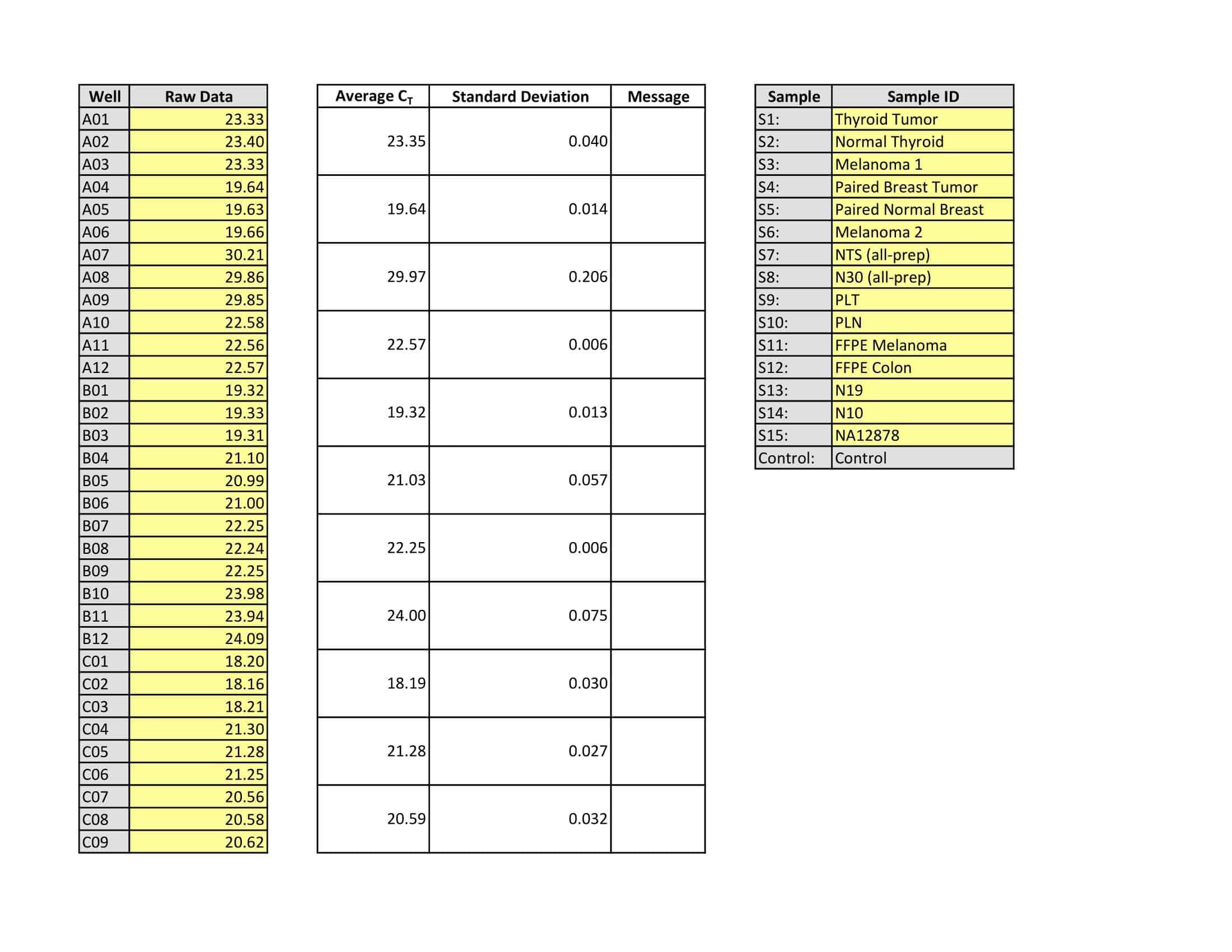












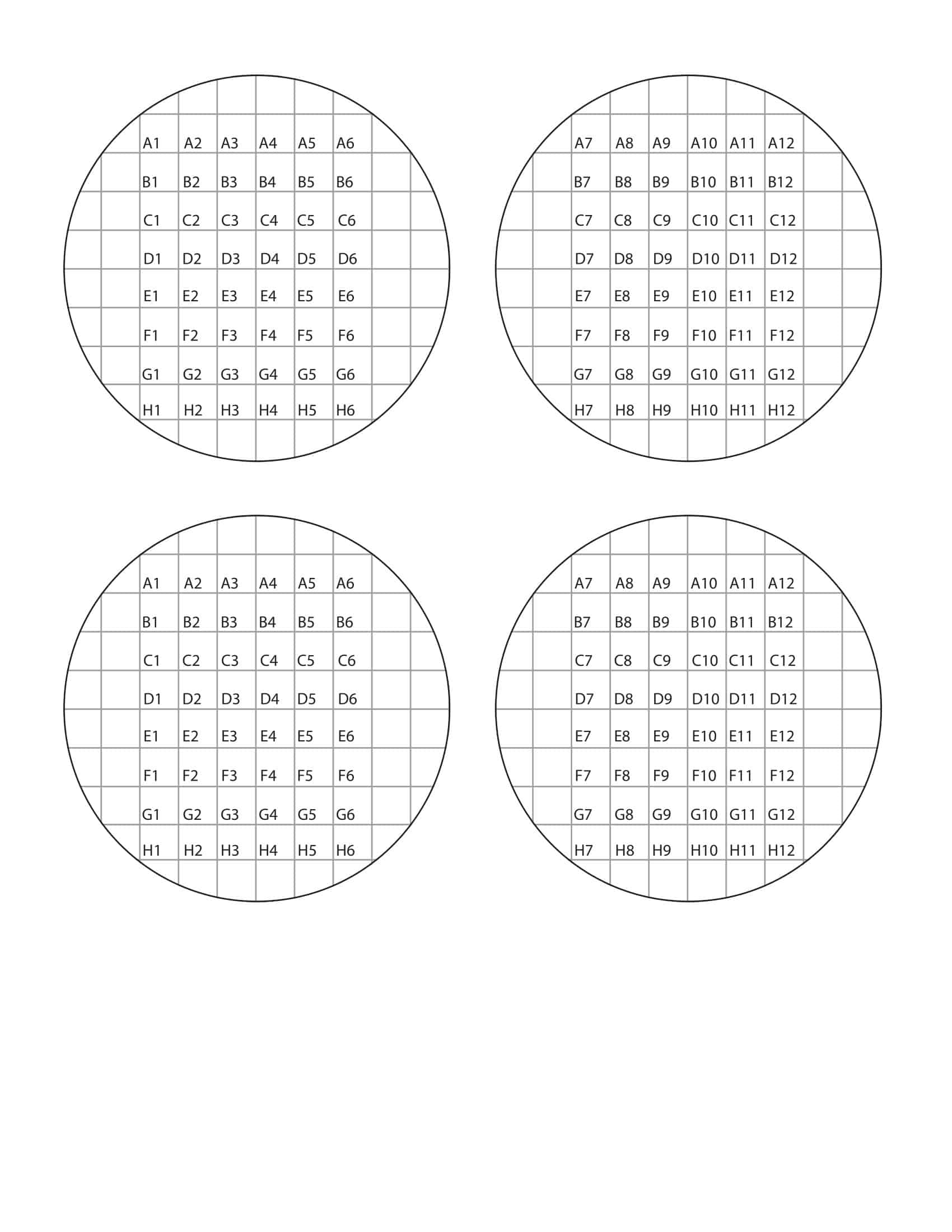
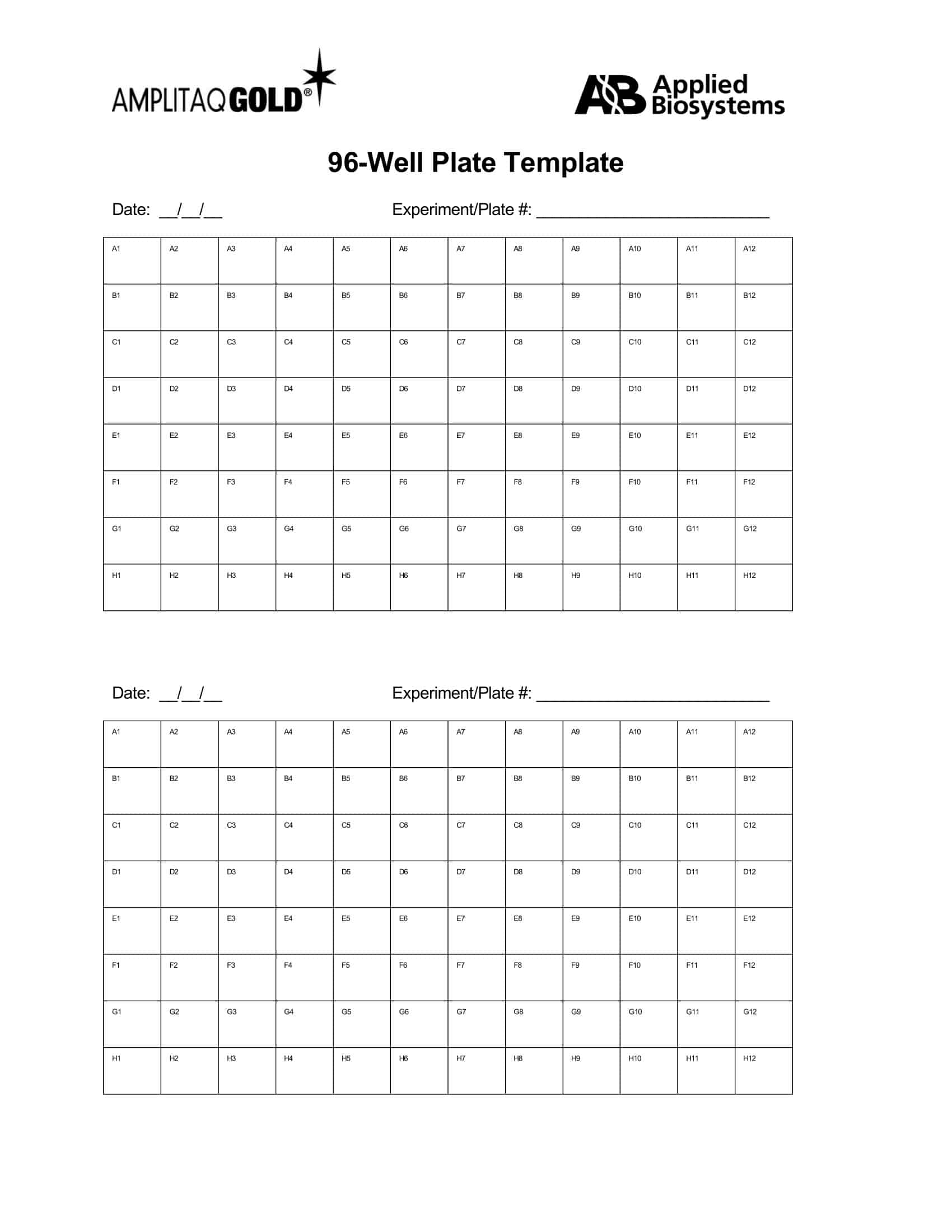


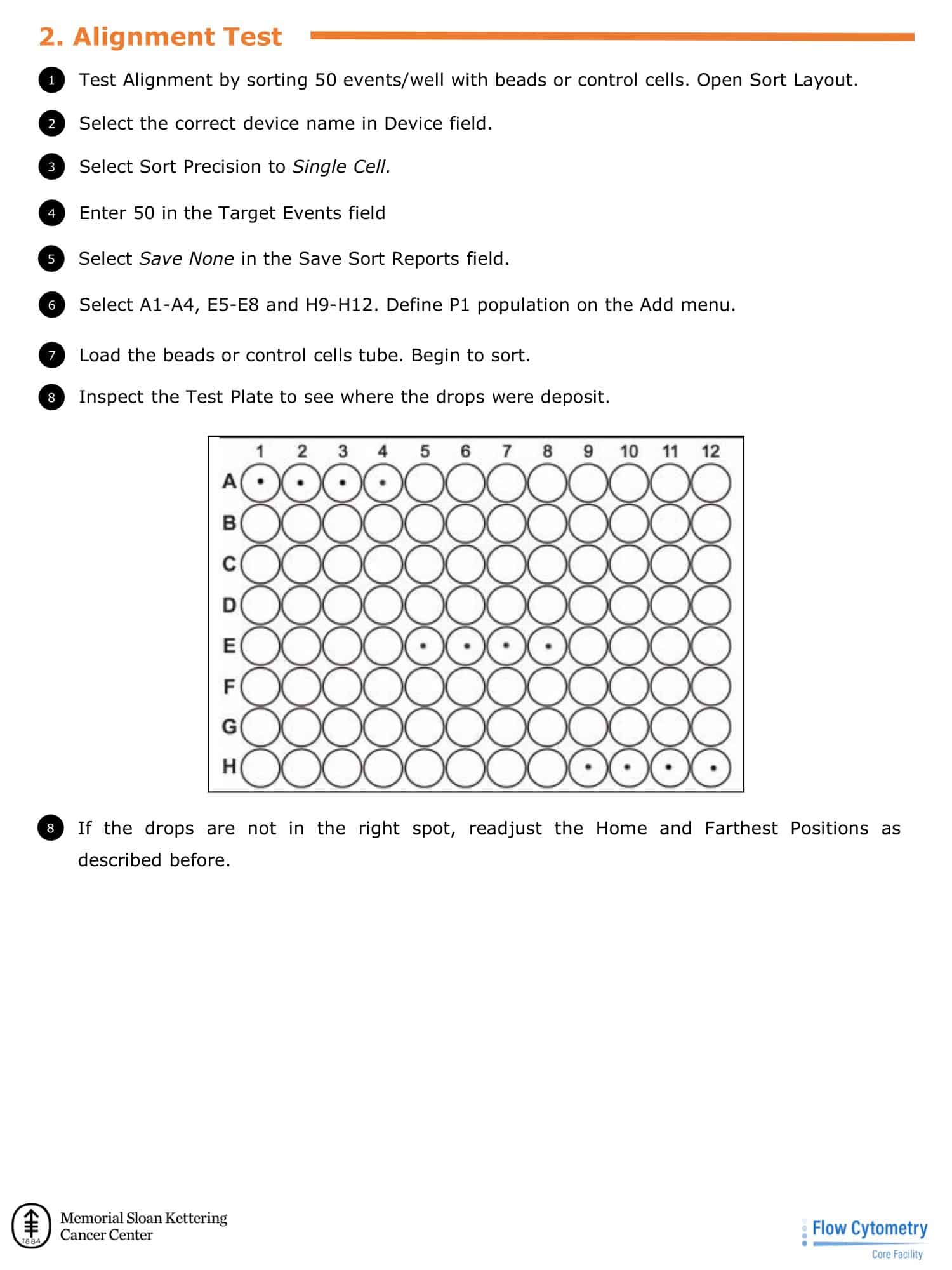


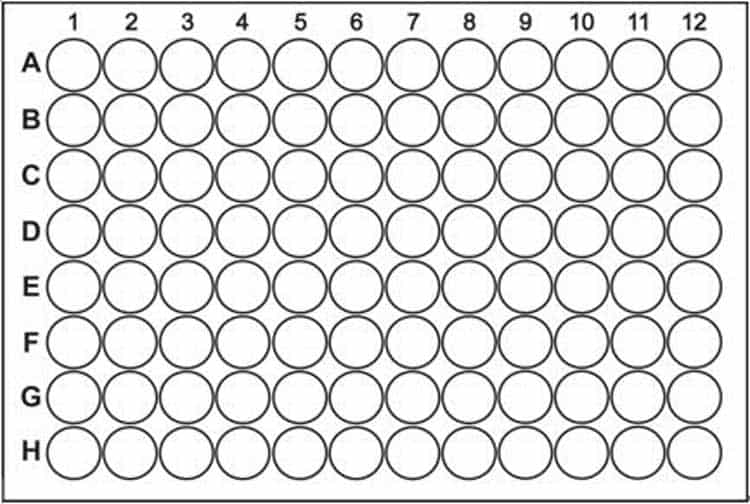
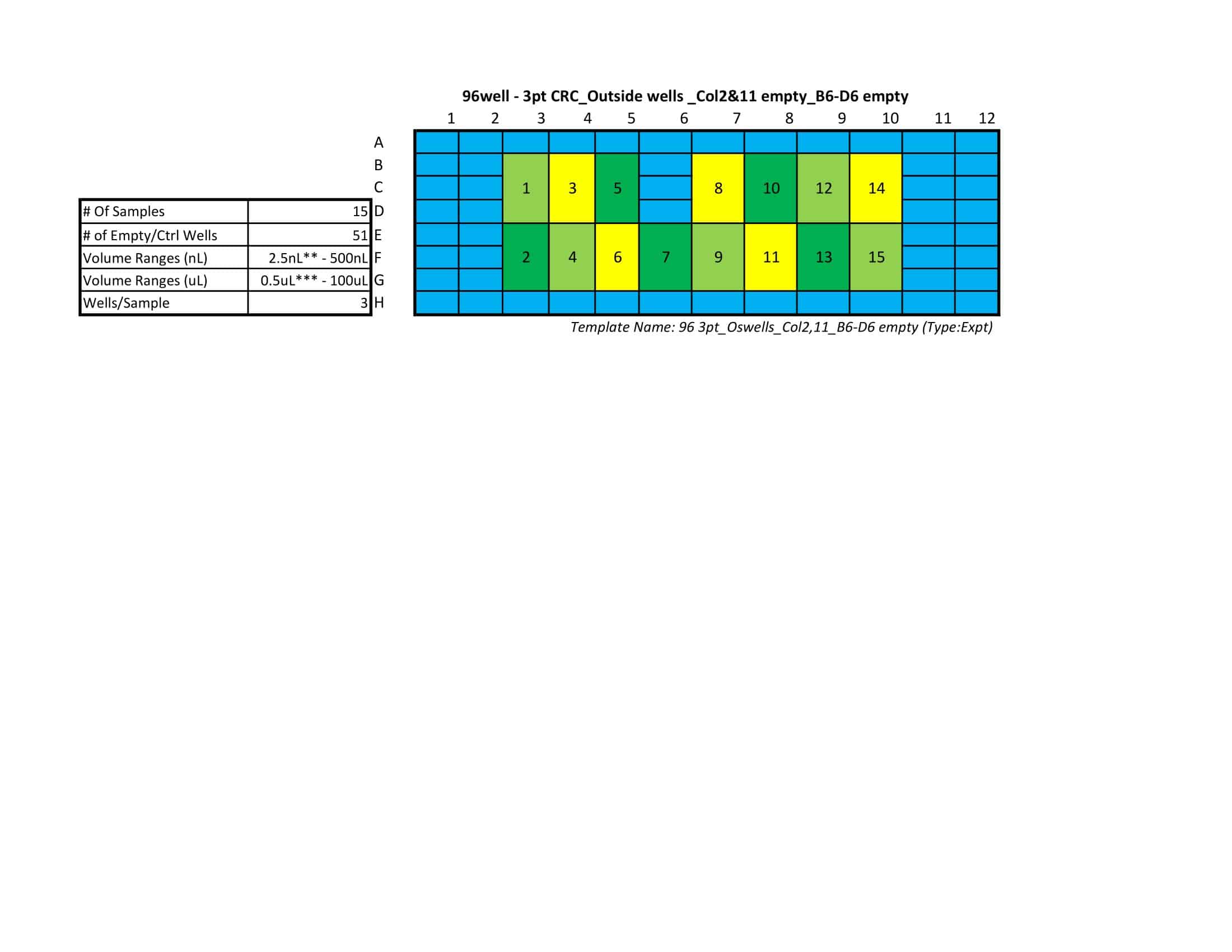
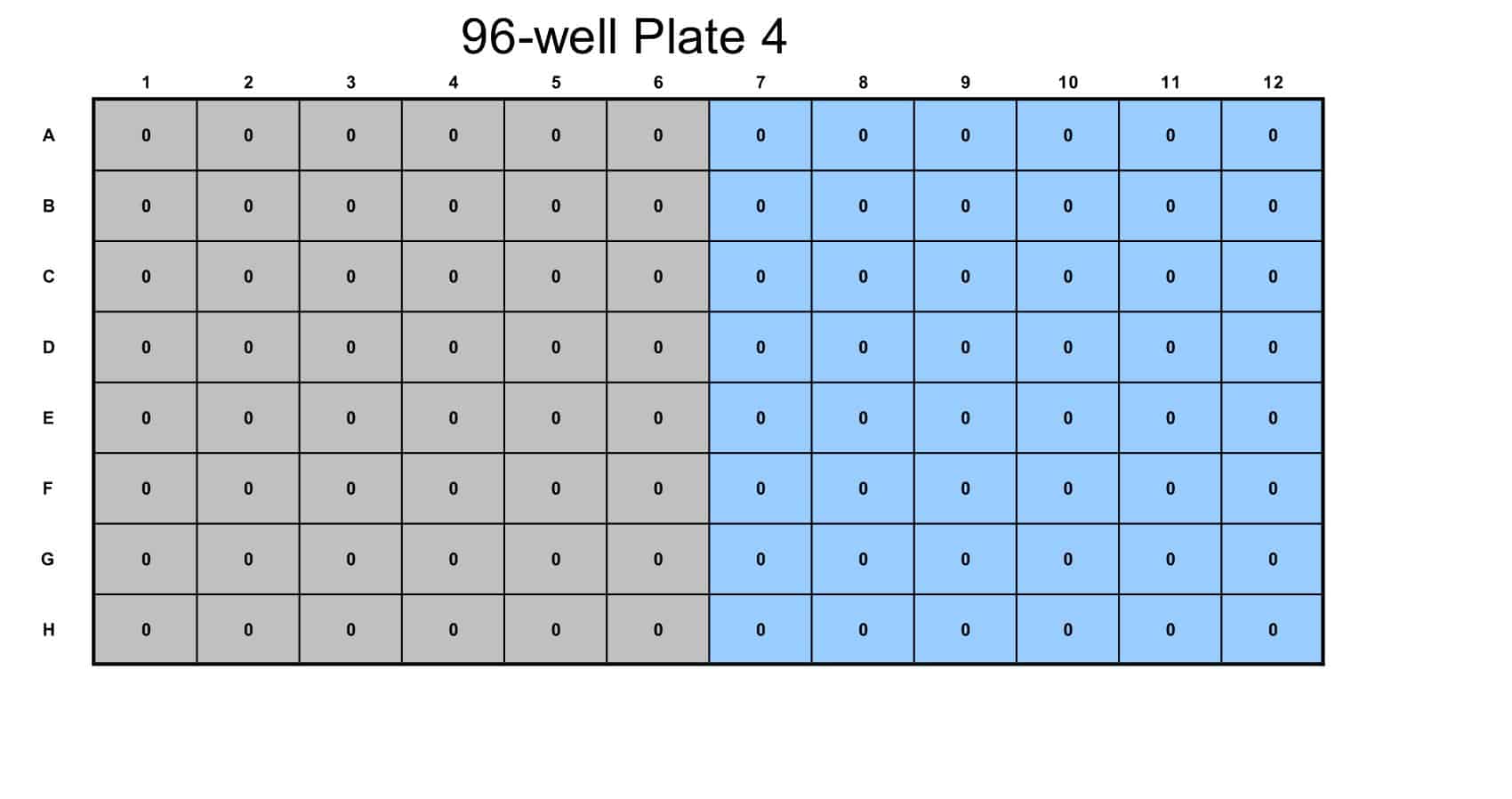


![Free Printable Roommate Agreement Templates [Word, PDF] 1 Roommate Agreement](https://www.typecalendar.com/wp-content/uploads/2023/06/Roommate-Agreement-150x150.jpg)
![Free Printable Credit Card Authorization Form Templates [PDF, Word, Excel] 2 Credit Card Authorization Form](https://www.typecalendar.com/wp-content/uploads/2023/06/Credit-Card-Authorization-Form-150x150.jpg)
![Free Printable Stock Ledger Templates [Excel,PDF, Word] 3 Stock Ledger](https://www.typecalendar.com/wp-content/uploads/2023/08/Stock-Ledger-150x150.jpg)
